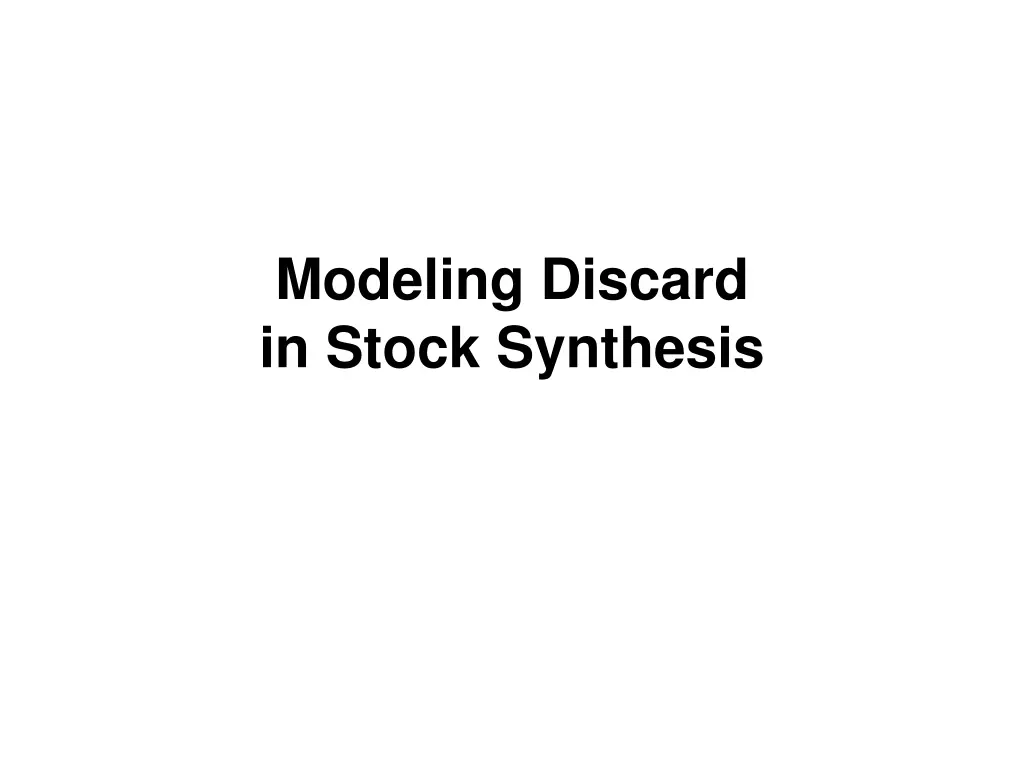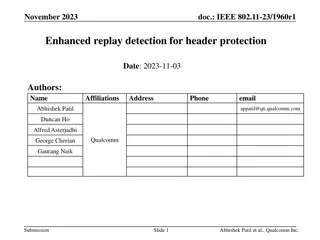
Fleet Specifications and Bycatch Management
Learn about modeling discard in stock synthesis, retention and discard mortality, bycatch fleet management, and fleet specifications in fishery management. Understand key parameters for estimating F, managing discard mortality, and handling bycatch issues efficiently.
Download Presentation

Please find below an Image/Link to download the presentation.
The content on the website is provided AS IS for your information and personal use only. It may not be sold, licensed, or shared on other websites without obtaining consent from the author. If you encounter any issues during the download, it is possible that the publisher has removed the file from their server.
You are allowed to download the files provided on this website for personal or commercial use, subject to the condition that they are used lawfully. All files are the property of their respective owners.
The content on the website is provided AS IS for your information and personal use only. It may not be sold, licensed, or shared on other websites without obtaining consent from the author.
E N D
Presentation Transcript
Modeling Discard in Stock Synthesis
Retention and discard mortality Retention is a logistic function of size with parameter for asymptotic retention rate Offset from inflection parameter for males Discard mortality also logistic with asymptote and male offset dead fish = sel (ret + (1-ret)*disc)
Bycatch Fleet 6/21/2012 set catch_se=-1 to ignore catch logL for this fleet; still need a catch value(ignored) for each year to trigger estimation of F; also need a time series of discard and/or effort from which the F will be estimated. 3.24d
Bycatch Fleet all discard 7/12/2012 Setting the discard option in the size-selectivity section to a value of 3 will cause retention to be set to 0.0 for all sizes and discard mortality to be set to 1.0 for all sizes. No parameters are read. 0 = all retained, no discard, no parameters read 1 =read 4 retention parameters, all discarded fish are dead 2=read 4 retention and 4 discard mortality parameters 3=none retained, all discard dead, no parameters are read 3.24e
Getting F for Bycatch Fleet Do F as parameters and use informative prior Enter time series of discard amount Do as super-year if annual fluctuations are just noise Get annual changes in F by entering a survey as type=2, which is an index proportional to F (so q=1/q)
Bycatch fleet - issue A bycatch fleet is still a fleet, so when searching for Fmsy & Fspr, its F level is scaled up and down with all the other fleets as if it is a controllable target fleet SS3.30 will provide a wider range of options for managing bycatch fleets
Fleet Specifications in 3.30 #_fleet_type: 1=catch fleet; 2=bycatch only fleet; 3=survey; 4=ignore #_survey_timing: -1=for use of catch-at-age to override the month value associated with a datum #_fleet_area: area the fleet/survey operates in #_units of catch: 1=bio; 2=num (ignored for surveys; their units read later) #_equ_catch_se: standard error of log(initial equilibrium catch) #_catch_se: standard error of log(catch); can be overridden in control file with detailed F input #_rows are fleets fleet_type timing area units equ_catch_se catch_se need_catch_mult fleetname 1 -1 1 1 .05 .05 1 HL_E 2 -1 1 1 .05 .05 1 Shrimp_E #Bycatch_fleet_input_goes_next #a: 1=use retention curve like other fleets; 2=all discarded #b: 1=deadfish in MSY, ABC and other benchmark and forecast output; 2=omit from MSY and ABC (but still include the mortality) #c: 1=Fmult scales with other fleets; 2=bycatch F constant at input value; 3=bycatch F form range of years #d: F or first year of range #e: last year of range # a b c d e
Discard Time Series - Issue If discard is mostly small/young fish And retention curve is constant over time Then fluctuations in observed discard will appear to be a recruitment signal to SS Consider time-varying selectivity &/or retention as alternative explanation for the discard fluctuations





